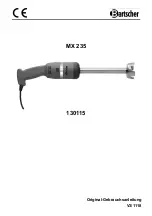
Series III RangeMaster
Owner’s Manual
November 2016
3
CHECKING BIAS
1.
Use a fresh battery, unplug both jacks, turn unit off, remove cover.
2.
Set your DMM for DC Volts.
3.
Attach the black (ground) lead to pin #1 (facing the front of the unit, the
terminal strip has 6 pins - numbered from left to right. The #6 pin is unused
and is cut off.)
4.
Attach the red (positive) lead to pin #3 (the collector leg)
5.
Turn on unit.
6.
You would like to see between -6.5 and -7.2 Volts (Remember the OC44 is
PNP, so Positive ground)
7.
If the measurement is out of range, either something is wrong, or you need to
change the bias resistor values to bring it into range. This may require fiddling.
OPERATION
The RangeMaster is not a "Stomp Box". It was meant to reside comfortably on the top
of your amp. The switch can be noisy when turned on (pop) and was not really meant
to be switched on while playing (you either played with it ON or OFF; no switching
during a solo).
The Boost control is sensitive, and as mentioned earlier, scratchy, so it, too, was
meant to be set at the "sweet spot" and then left alone. Some nice distortion, gain,
and harmonics are evident even at low Boost settings. Turning the Boost up just
makes it more aggressive. And louder.
The RangeMaster is not exactly delicate, but it does not appreciate rough handling,
and dropping it or throwing it around can have negative outcomes. Warning.
Unplug your RangeMaster and turn it off when you are done playing with it. If you
don't, you will drain the battery, and then you will have to undo the 4 screws holding
on the cover and replace the battery. this is a pain, so you will learn to turn it off when
you are not using it. The 9V battery lasts a very long time if you keep it turned off
when not in use.

























